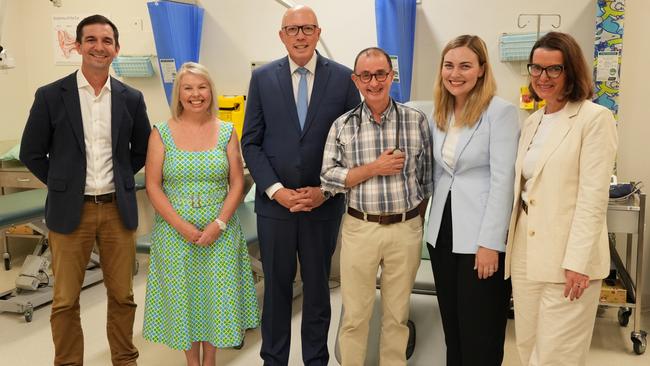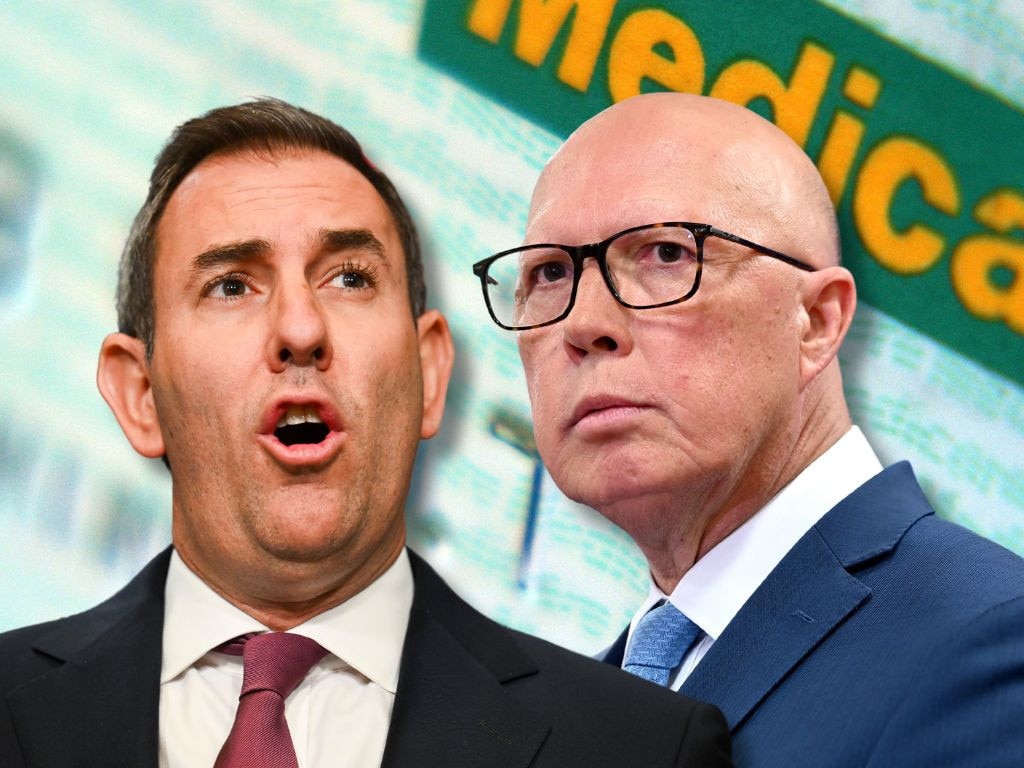
When asked what he was going to do to take structural pressures off the budget after immediately endorsing the Prime Minister’s plan to pour billions more into Medicare, the Opposition Leader merely pointed to the Coalition supporting Labor’s reforms to lower spending growth in the NDIS and aged care.
This was hardly a convincing answer from a leader who is vowing to restore budget discipline and undo Labor’s “reckless spending”, as economists despair at the lack of policy from either leader to put Australia on a sustainable economic pathway.
The fact is, Dutton’s policies are a world away from his rhetoric on budget discipline and it would take some brave announcements to bridge this gap by the election.
Albanese had not even finished his speech in Tasmania on Sunday when Dutton released a statement not only backing an $8.5bn spending boost to Medicare but declaring his plan would increase funding by $9bn.
Dutton clearly was trying to shut down the debate on a Labor policy strength so he could get attention back on his preferred areas of cost of living, energy and immigration. Nevertheless, neither Albanese nor Dutton can explain how the plan to vastly expand bulk-billing incentives – at a cost of $2.4bn a year by 2028-29 – will be paid for.
Neither side has outlined spending offsets or proposed revenue increases; it all just seems destined to be added to the nation’s credit card bill.
Jim Chalmers’ boast that $5.4bn of the package had already been in the budget under the “decisions taken but not yet announced” provision means nothing as it was first included in December’s economic update in which deficits blow out by $22bn across four years.
And it still leaves the not-so-measly sum of $3bn unaccounted for in a budget that is projected to be in the red for a decade.
The Prime Minister’s policy to make doctor appointments free for nearly all Australians is a worthwhile cause on the face of it: more money for an under-pressure healthcare system, restoring the efficacy of a great Labor reform and enabling more Australians to visit a doctor without adding to their cost-of-living pressures.
But it is undermined by its lack of real funding and Albanese has made it brazenly political, using a speech in Launceston on Sunday to accuse Dutton of planning on “cutting bulk billing off at the knees”. It is no mistake the policy has a slightly bigger spend than the amount the Australian Medical Association claims Dutton cut from Medicare when he was health minister in the Abbott government, showcasing Labor’s strategy to use Mediscare 2.0 in a bid to keep the unpopular Albanese in the Lodge.
It follows a host of spending announcements since late last year that have been accompanied with zero explanation of how they will be funded: $16bn to wipe 20 per cent off student debts (classified as “off-budget” as if that means the debt doesn’t exist), a $7.2bn upgrade to the Bruce Highway, $2bn for green aluminium, $2bn for green steel, $1.7bn for hospitals and $428m to loosen the activity test for childcare.
Labor is also considering an extension of the $300 electricity rebate for households and small businesses past its June 30 expiry, with the policy costing $3.5bn for a single year in the last budget.
The only revenue measure Labor has confirmed it will take to the election is to increase taxes on superannuation balances worth $3m and above, which would raise a significant $2bn-plus a year but not enough to balance out the increase in spending.
But an election is a contest, and Dutton has not shown evidence to suggest a Coalition government would set Australia on the path to living within our means. Dutton talks about fiscal prudence, but has yet to provide a credible economic pathway for a new government.






Peter Dutton was so fast out of the blocks to outbid Anthony Albanese on unfunded Medicare spending promises he must not have had a chance to consider his lines on how the Coalition would improve the structural budget deficit.